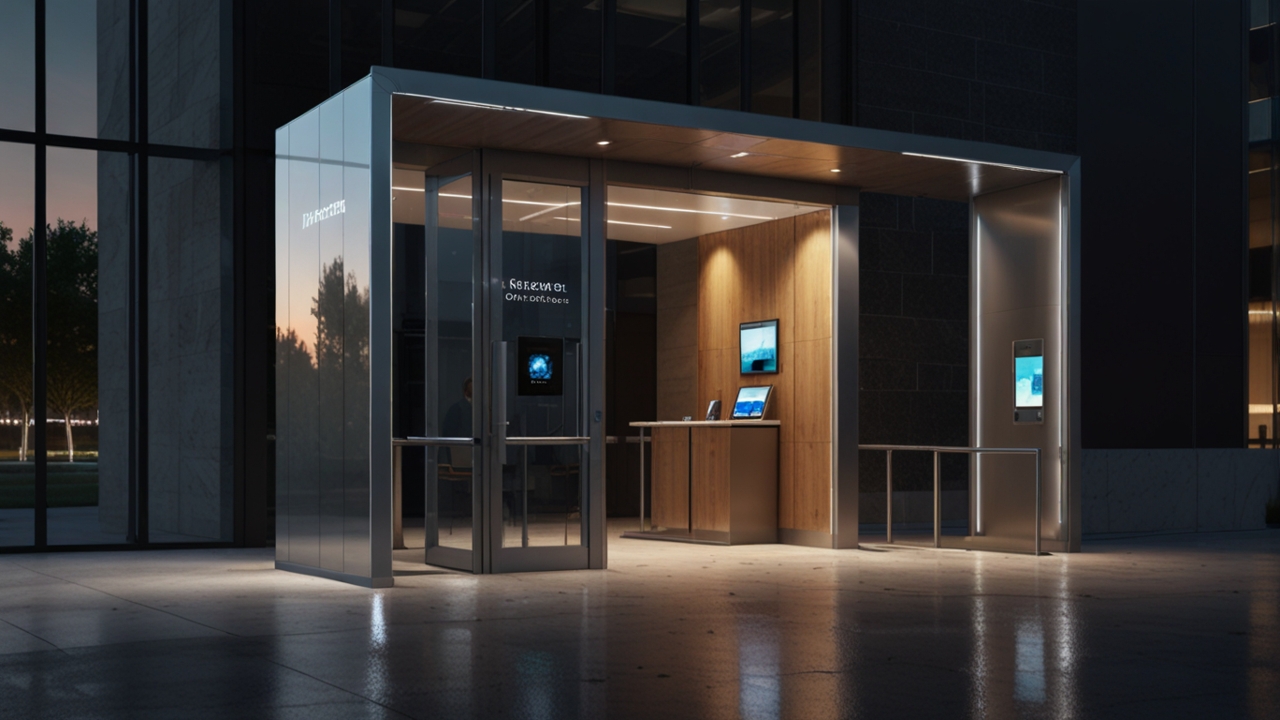
Over the next five years, access control systems are expected to undergo significant evolution driven by security demands, user experience expectations, and advancements in connectivity and computing power. As organizations continue to become more digitized, the need for more efficient and responsive access management solutions will only increase. Access control will no longer just be about locking or unlocking doors; instead, it will involve a seamless integration of authentication, real-time monitoring, automation, and data-driven decision-making. This shift will redefine how businesses, institutions, and public spaces manage identity, privacy, and safety.
The transition will be fueled in large part by the growing need to manage both physical and digital access simultaneously. Companies are managing hybrid and remote workforces, contractors, visitors, and distributed operations across multiple locations. Traditional systems that rely on keycards or manual sign-ins are already becoming insufficient. Instead, integrated solutions that combine identity governance, biometric verification, and centralized data management will become standard. These future systems will be designed to reduce administrative overhead while enhancing accountability, auditability, and compliance.
Moreover, global concerns about cybersecurity and data breaches will continue to influence access control development. As more devices are connected and automation increases, organizations will require solutions that balance convenience with robust protection. The next five years will see a major push toward authentication models that ensure identities are validated reliably and securely, without compromising efficiency. Access control will become a core component of organizational resilience, not just a facility management function.
The Rise of Biometric-First Authentication

Biometric authentication is poised to become the default method of verifying identity in both commercial and public environments. Traditional access cards and PIN codes are increasingly viewed as vulnerable due to theft, loss, duplication, or security compromise. Biometrics such as fingerprints, facial recognition, iris scanning, and even behavioral patterns offer a stronger, more personalized layer of authentication. These technologies ensure that access is tied directly to an individual rather than something they carry or know, making unauthorized access significantly more difficult.
In the next five years, biometric systems will shift from being optional add-ons to standard features in access control deployments. The technology will become more affordable, easier to deploy, and more accurate, reducing false positives and false negatives. Additionally, improvements in artificial intelligence and machine learning will enhance recognition capabilities even in dynamic conditions, such as varying lighting, angles, or user movement. This increased reliability will help build user trust and encourage widespread adoption across industries.
However, biometric-first security will also raise ethical and regulatory concerns regarding data privacy and surveillance. Organizations will need to adopt strong governance policies outlining how biometric data is collected, stored, used, and deleted. Failure to handle this data responsibly could lead to compliance violations and public mistrust. Therefore, the future of biometrics in access control will depend not only on technological advancement but also on transparent and secure data stewardship practices.
Cloud-Based Access Control and Centralized Management

Cloud-based access control is becoming the new standard for organizations seeking scalability, flexibility, and centralized oversight. On-premise systems, while secure, are labor-intensive and often limited in their integration capabilities. Cloud solutions allow security teams to manage multiple sites, control user permissions, and monitor access activities in real time from a single unified dashboard. This makes it easier to deploy consistent security policies across distributed operations while also improving response times to incidents or anomalies.
Another advantage of cloud-based systems is the ability to integrate more seamlessly with other digital platforms such as HR software, visitor management, surveillance systems, and cybersecurity tools. By connecting access data with organizational workflows, businesses can automate onboarding and offboarding procedures, track compliance, and generate advanced analytical insights to enhance overall operational efficiency. The cloud will enable security systems to evolve from reactive measures to proactive intelligence-based management.
Nevertheless, cloud adoption requires robust cybersecurity measures. Since access control data is highly sensitive, cloud infrastructure must be protected through encryption, zero-trust frameworks, and continuous vulnerability monitoring. Organizations must ensure that their access management platform is compliant with relevant security and privacy regulations. Over the next five years, secure-by-design cloud architectures will become essential components of modern access control strategies.
The Integration of AI and Predictive Security Analytics

Artificial intelligence will play a transformative role in access control, particularly in detecting anomalies and predicting security risks before they occur. Instead of relying solely on static rules or manual monitoring, systems enhanced with AI can analyze patterns of behavior across facilities and user groups. For example, AI can detect unusual access attempts, irregular movement patterns, or suspicious entry times. This proactive approach helps security teams prevent threats rather than simply respond to them after damage is done.
Predictive analytics will allow access control systems to learn from historical data and continuously refine access policies. For instance, the system may automatically flag repeated failed entry attempts or restrict access privileges if certain conditions are met. These automated safeguards reduce the workload on security personnel and ensure faster incident resolution. AI-driven insights can also help businesses optimize staffing, manage crowd flow, and enhance operational efficiency.
However, the success of AI in access control will depend on data quality and responsible algorithm training. Biases in datasets or poorly defined access rules could lead to misinterpretation or unintended exclusion. Therefore, organizations will need to maintain human oversight and regularly audit AI decision-making processes. The goal is not to replace human judgment but to augment it with precise, data-backed intelligence.
Mobile Credentials and the Transition Away from Physical Badges

Mobile credentials are rapidly replacing traditional access cards due to their convenience, security, and user familiarity. People already rely on smartphones for payments, identity verification, and digital communication. Extending the phone into a secure key credential is a natural progression. Mobile-based access systems leverage NFC, Bluetooth, QR codes, or dedicated access apps to authenticate users. This eliminates the need to issue and manage physical badges, which can be lost, stolen, or damaged.
In the next five years, mobile credentials will become standard in workplaces, residential complexes, transportation hubs, and educational institutions. These systems also integrate easily with visitor management solutions, enabling temporary access passes to be issued instantly and remotely. This streamlining of access workflows supports hybrid work models and enhances the guest experience while maintaining strong security controls. Additionally, mobile credentials allow organizations to track and record access events in real time for auditing or incident investigation.
However, implementing mobile access requires careful consideration of device security and user authentication methods. Strong device-level protection such as passcodes, biometrics, or multi-factor authentication must be enforced to ensure that unauthorized individuals cannot use someone else’s phone to gain entry. As mobile systems mature, they will incorporate stronger encryption, real-time certificate validation, and zero-trust identity protocols to maintain a secure environment.
RELATED POSTS
The Evolution of Visitor Management Systems Over the Last Decade
In the early 2010s, visitor management systems were primarily manual, relying on paper logbooks and handwritten entries at reception desks. Visitors would sign in, provide identification, and note their purpose of visit. While this method provided basic recordkeeping,...

